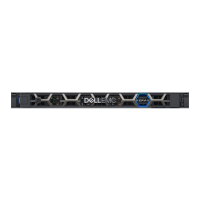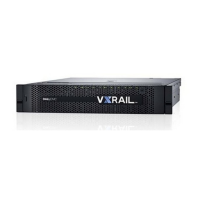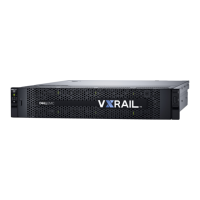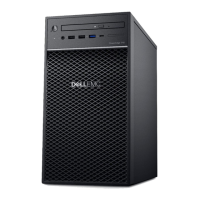24 | Network Planning Guide
© 2018 Dell Inc. or its subsidiaries
specified range in a sequential order. The IP address range must be large enough to cover the number of ESXi hosts planned for the
VxRail cluster, but a larger IP address range can be specified to cover for planned expansion.
Step 9. Decide on VxRail Logging Solution
Decide whether to use your own third-party syslog server, use the vRealize Log Insight solution included with VxRail, or no logging.
You can only select the vRealize Log Insight option if you also choose to use the VxRail vCenter Server. If you choose instead to use
a Customer-Supplied vCenter Server, then the choices are to use your own third-part syslog server, or no logging. If you choose the
vRealize Log Insight option, the IP address assigned to Log Insight must be on the same subnet as the VxRail management network
Step 10: Decide on Passwords for VxRail Management
You will need to assign a password to the accounts that are members of the VxRail management ecosystem. Refer to the tables in
VxRail Password Table to use as worksheets for your passwords.
NOTE:
The Dell EMC service representative will need passwords for the VxRail accounts in this table. For security
purposes, you can choose to enter the passwords during the VxRail initialization process, as opposed to providing
them visibly in a document.
• For ESXi hosts, passwords must be assigned to the ‘root’ account. You can choose to use one password for each ESXi host, or
apply the same password to each host.
• For VxRail Manager, a password must be assigned to the ‘root’ account [Row 1]. This credential is for access to the console.
• Access to the VxRail Manager web interface will use the ‘administrator@<SSO Domain>’ credentials
o If you choose to deploy the VxRail vCenter Server, then VxRail Manager and vCenter share the same default
administrator login, ‘administrator@vsphere.local’. Enter the password you want to use [Row 2]
o If you choose to use a Customer-Supplied vCenter Server, then VxRail Manager will use the same
‘administrator@<SSO Domain>’ login credentials you use for access to the Customer-Supplied vCenter Server
• If you choose to deploy the VxRail vCenter Server:
o Enter the ‘root’ password for the VxRail vCenter Server [Row 3]

